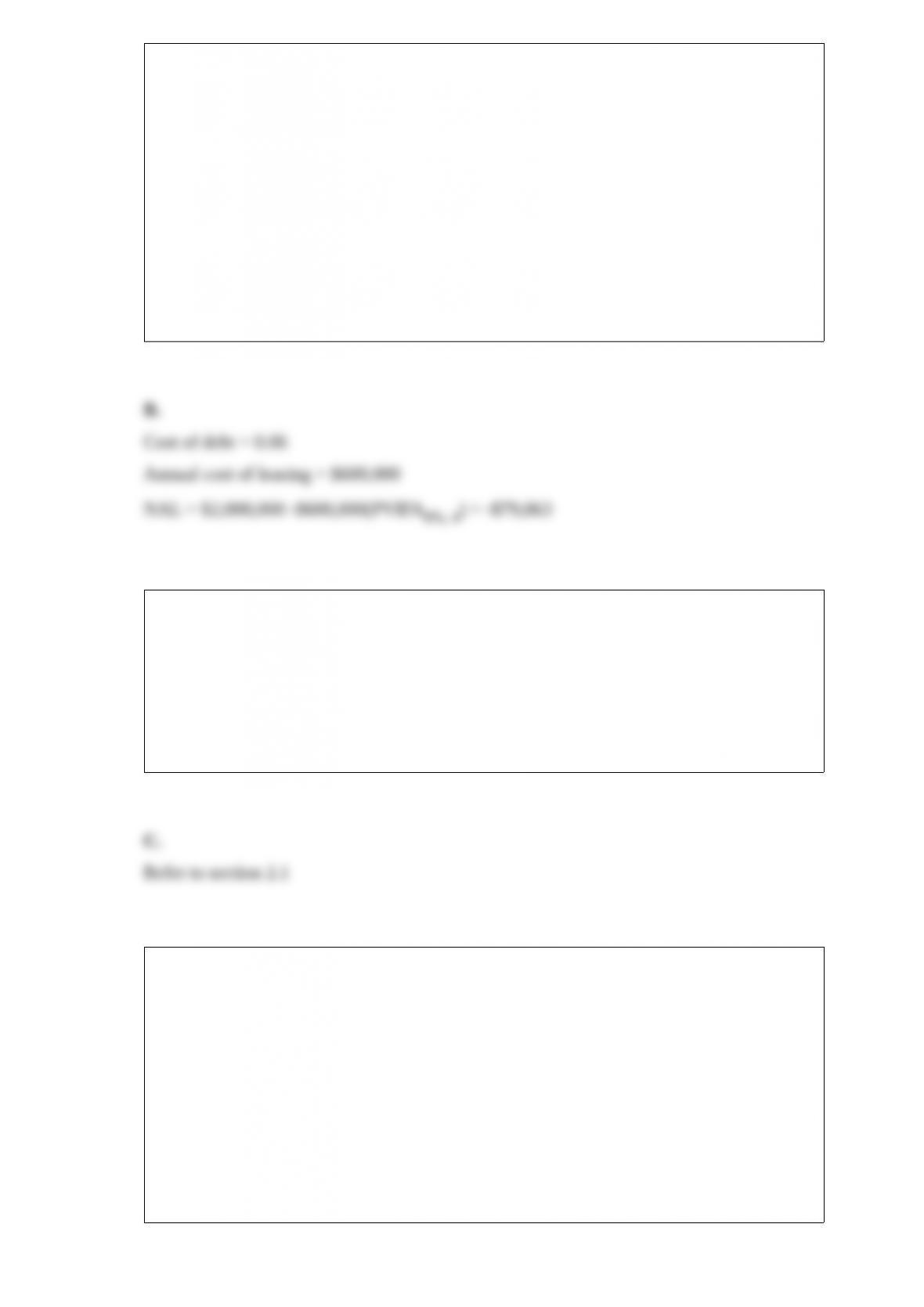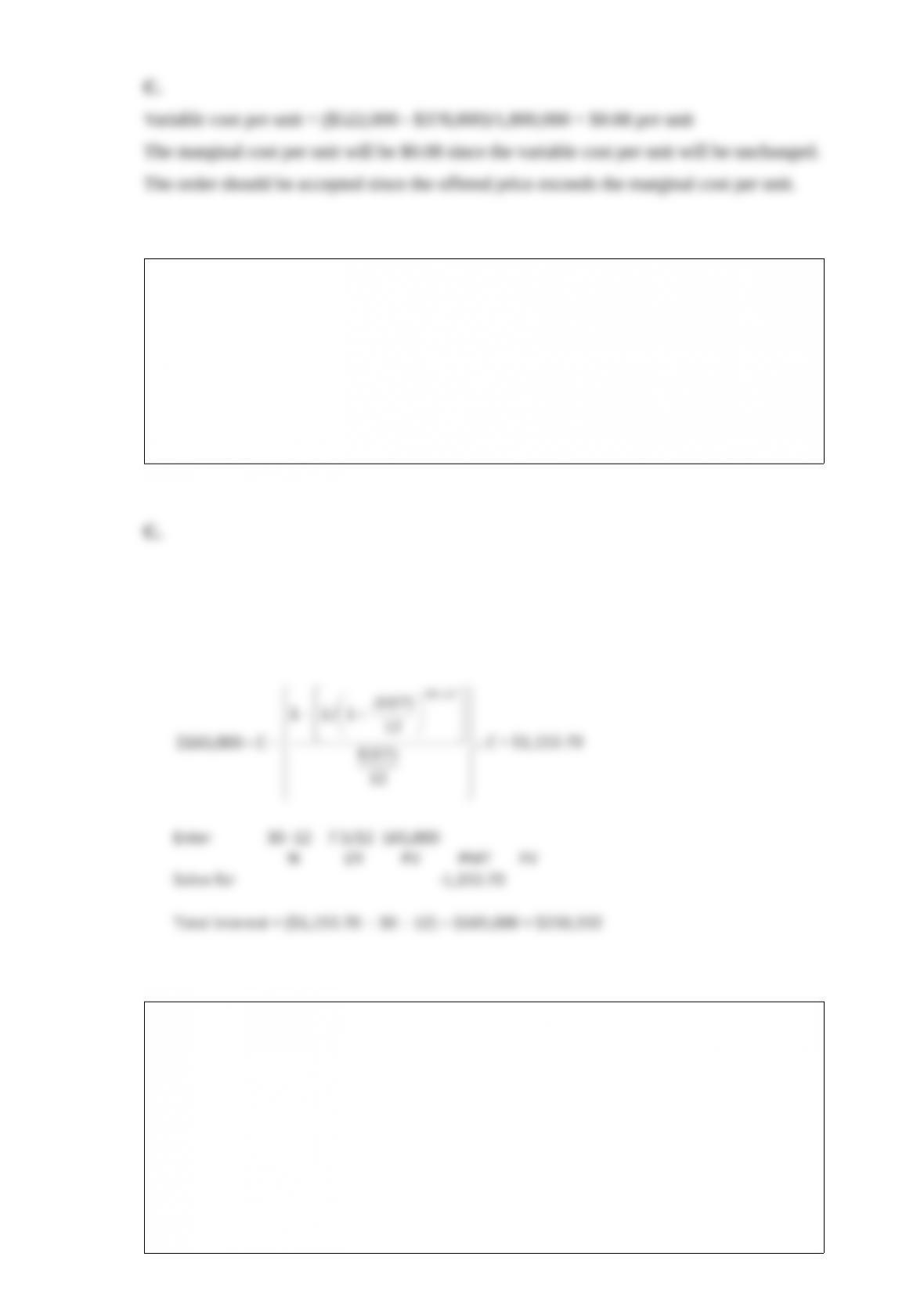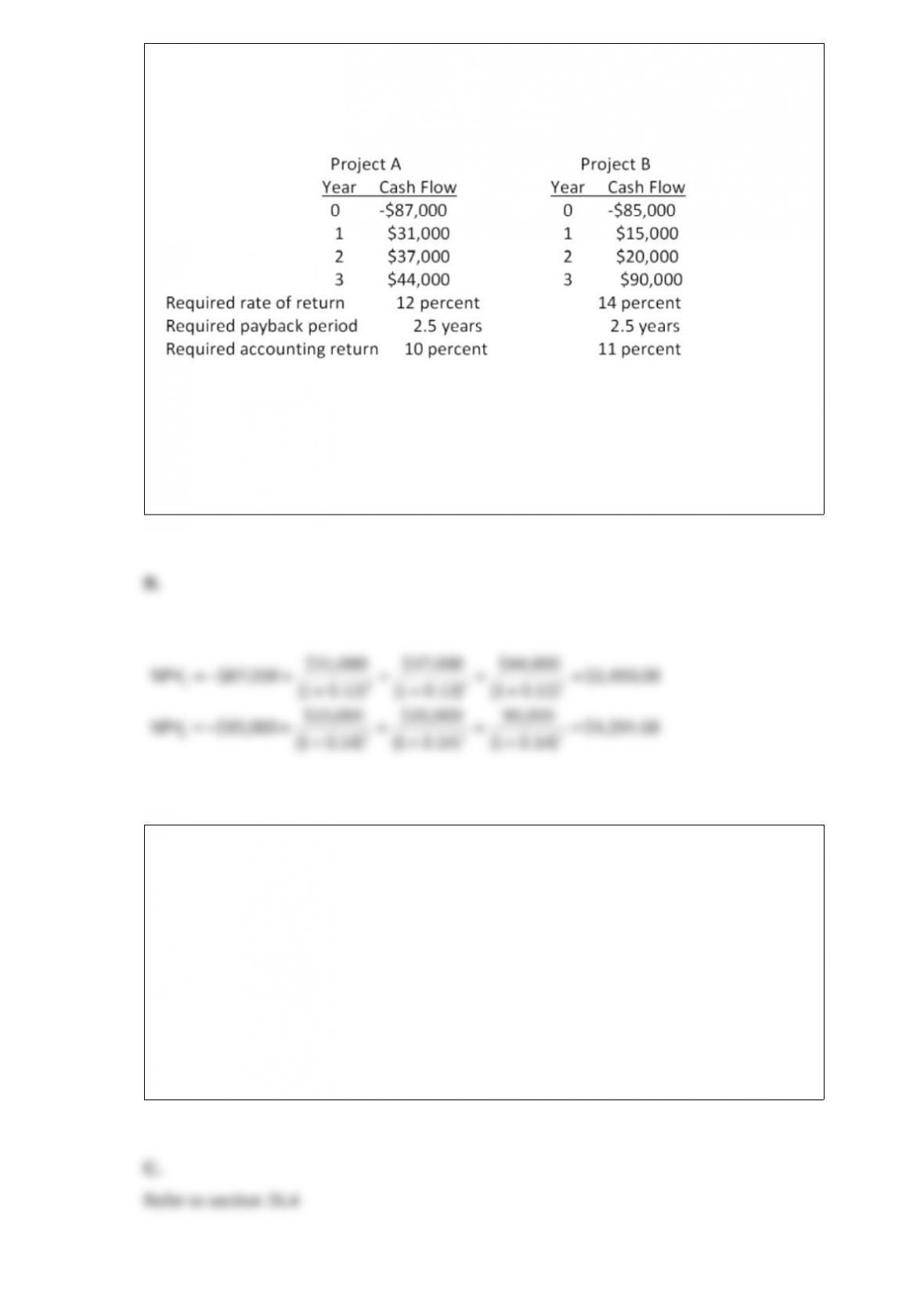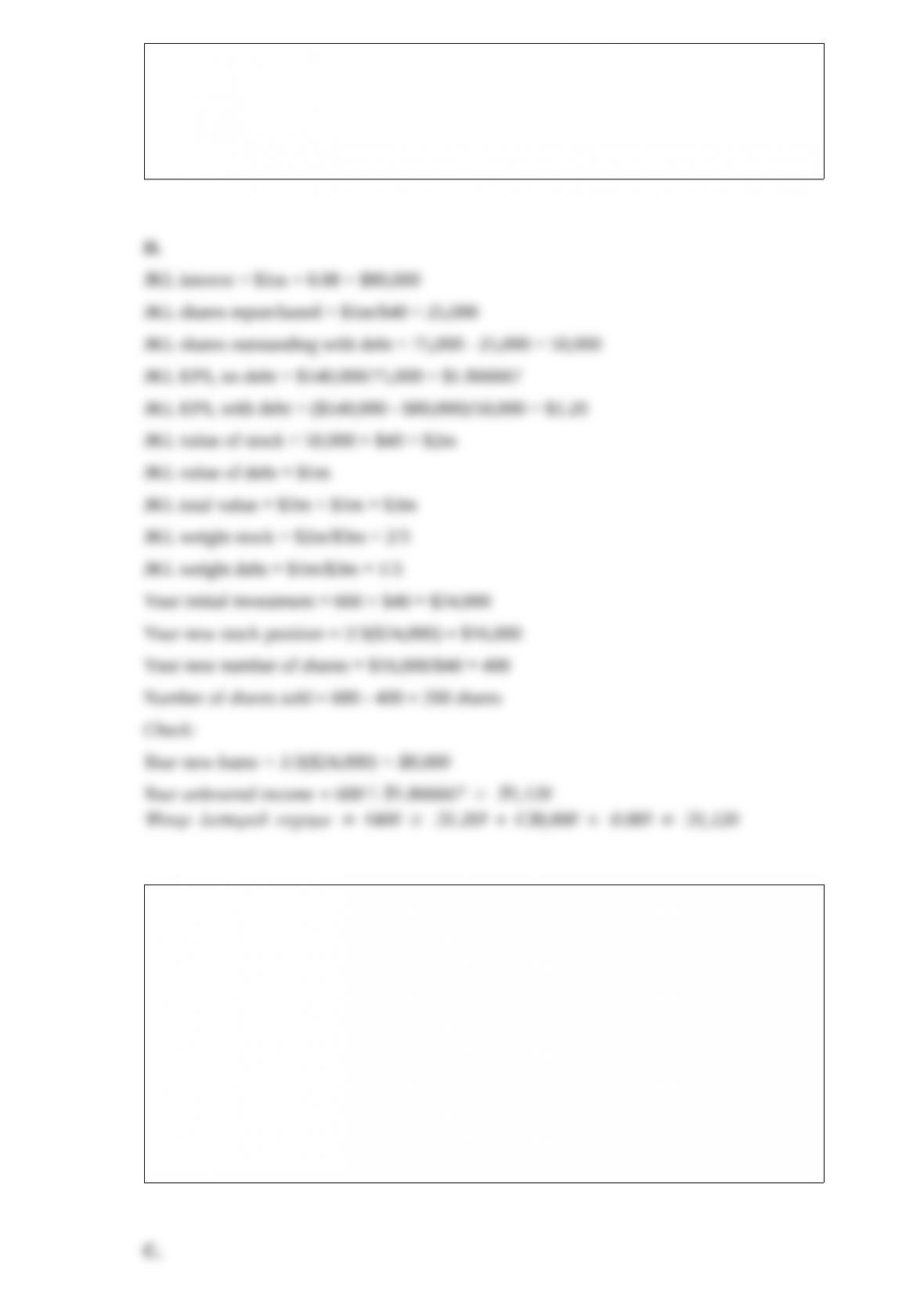You work for a nuclear research laboratory that is contemplating leasing a diagnostic
scanner (leasing is a very common practice with expensive, high-tech equipment). The
scanner costs $2 million and it would be depreciated straight-line to zero over 4 years.
Because of radiation contamination, it will actually be completely valueless in 4 years.
You can lease it for $600,000 per year for 4 years. Assume your company does not
contemplate paying taxes for the next several years. You can borrow at 6 percent before
taxes. What is the net advantage to leasing from your company's standpoint?
A. -$82,711
B. -$79,063
C. -$21,409
D. -$20,818
E. -$18,315
Which one of the following statements concerning net working capital is correct?
A. The lower the value of net working capital the greater the ability of a firm to meet its
current obligations.
B. An increase in net working capital must also increase current assets.
C. Net working capital increases when inventory is sold for cash at a profit.
D. Firms with equal amounts of net working capital are also equally liquid.
E. Net working capital is a part of the operating cash flow.
The Metal Shop produces 1.8 million metal fasteners a year for industrial use. At this
level of production, its total fixed costs are $378,000 and its total costs are $522,000.
The firm can increase its production by 5 percent, without increasing either its total
fixed costs or its variable costs per unit. A customer has made a one-time offer for an
additional 50,000 units at a price per unit of $0.10. Should the firm sell the additional
units at the offered price? Why or why not?
A. yes; The offered price is less than the marginal cost.
B. yes; The offered price is equal to the marginal cost.
C. yes; The offered price is greater than the marginal cost.
D. no; The offered price is less than the marginal cost.
E. no; The offered price is greater than the marginal cost.



























